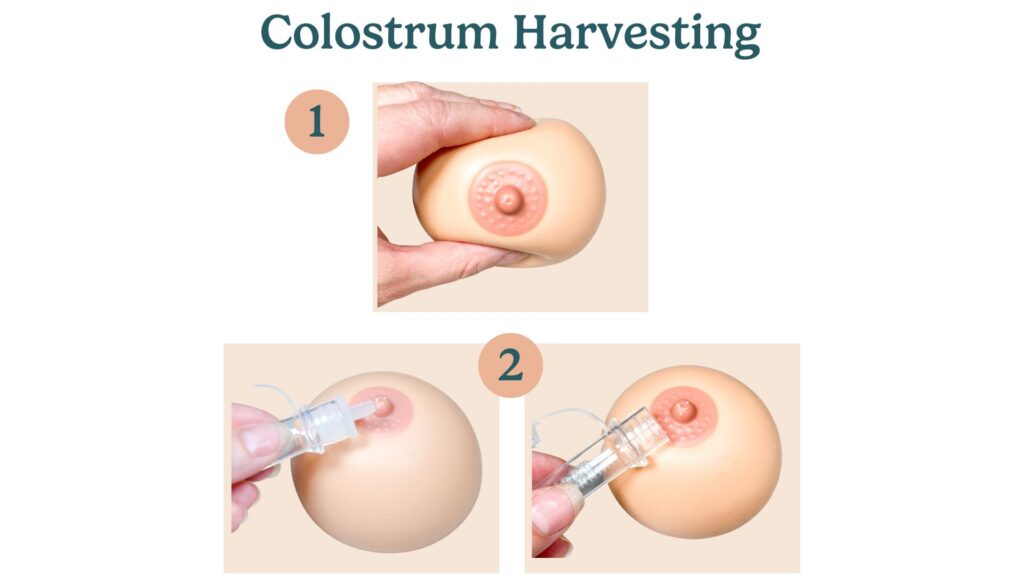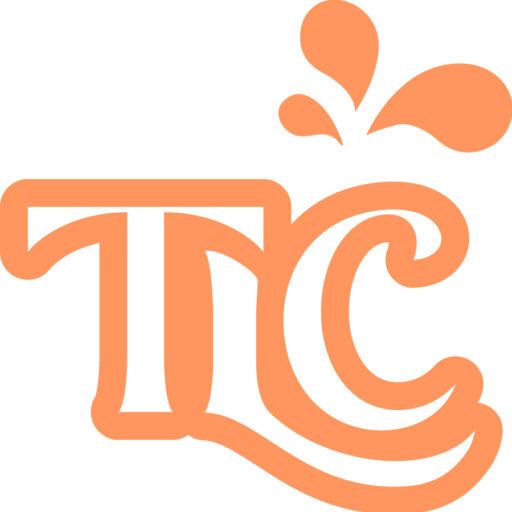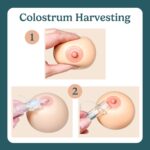colostrum harvesting

Colostrum harvesting
Colostrum harvesting is the process of expressing and collecting colostrum, the first form of milk produced by the mammary glands, during pregnancy. Colostrum is rich in antibodies, nutrients, and immune-boosting properties, making it highly beneficial for newborns. Harvesting colostrum can provide a valuable resource for your baby, especially if there are anticipated feeding challenges or medical conditions at birth.
What to watch out for
It’s important to understand the benefits and methods of colostrum harvesting and how to manage it. Here are some considerations and tips:
- When to start: Colostrum harvesting is typically done from around 36 weeks of pregnancy. Consult your healthcare provider before starting to ensure it’s safe for you and your baby.
- How to express: Hand expression is the preferred method for collecting colostrum. Gently massage your breast and compress the areola to express small amounts of colostrum into a clean container or syringe. Learn more about hand expression
- Storage: Collect colostrum in sterile syringes or containers and store it in the freezer. Label each container with the date and time of expression.
- Benefits: Colostrum can be used to feed your baby if there are latching issues, if they are born prematurely, or if they have low blood sugar or other medical conditions.
To manage colostrum harvesting, consider these tips:
- Stay hydrated: Drink plenty of water to support milk production.
- Practice hand expression: Familiarize yourself with hand expression techniques to make the process more effective and comfortable.
- Seek guidance: Work with a lactation consultant or healthcare provider for personalized advice and support on colostrum harvesting.
Physical limitations or health circumstances
Certain conditions may influence the need for colostrum harvesting:
- Diabetes: Babies born to mamas with diabetes may benefit from harvested colostrum to help stabilize blood sugar levels after birth.
- Planned cesarean section: Having colostrum on hand can be beneficial if there are any delays in initiating breastfeeding after a cesarean section.
- Anticipated feeding issues: If you expect feeding challenges due to conditions like cleft lip or palate, having colostrum available can ensure your baby receives essential nutrients.
Other terms
Understanding related terms can help you better manage colostrum harvesting and related practices:
- Colostrum: The first form of milk produced, rich in antibodies and nutrients, providing essential support for your newborn's immune system.
- Hand expression: A technique for manually expressing milk from the breast. Learn more about hand expression
- Lactation consultant: A professional who can provide support and guidance on breastfeeding issues, including colostrum harvesting.
- Sterile storage: Using clean, sterile containers or syringes to store expressed colostrum safely.
- Antenatal expression: The process of expressing colostrum before the baby is born.


